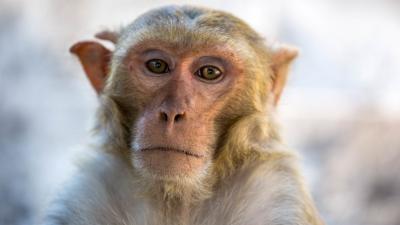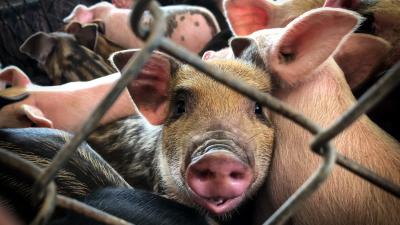Physicians Committee’s Response to Neuralink’s Nov. 30, 2022 “Show and Tell”

On Nov. 30, Elon Musk and Neuralink once again showed the world that their chief goal is self-promotion. The company continues to subject animals to painful, deadly experiments in the development of a brain-machine interface (BMI) while refusing to acknowledge its history of cruelty or the promise of noninvasive, human-relevant BMIs. Key takeaways from the “show and tell” include:
- "The primary purpose of this update is recruiting." Ahead of the event, Musk led the public to believe that there would be an exciting update to share from Neuralink’s work. Instead, he announced that he is seeking employees to attempt to accomplish what he so far has been unable to do.
- For years, Musk has claimed that Neuralink is close to conducting human clinical trials, but he provided no evidence that the company is any closer to that goal. Meanwhile, noninvasive BMIs are already improving patients’ lives (see below).
- Musk talked about the “long-term goals” of the company, but other researchers are already accomplishing these feats, without harming animals (see below).
- Musk discussed one of the monkeys used, comparing the experiment to “replacing a piece of [Pager’s] skull with a smart watch” while laughing about it. But hundreds of pages of public records reveal that Neuralink’s work is no laughing matter for the animals involved—something that Musk refused to discuss while suggesting that the animals used are willing subjects. An ongoing Physicians Committee lawsuit against the University of California, Davis, which partnered with Neuralink from 2017 to 2020, has revealed hundreds of pages of documents that show the horrors of the company’s work. Neuralink employees drilled holes in rhesus macaques’ skulls and implanted devices that often broke or caused severe infections. They failed to follow their own protocol, which resulted in at least one monkey suffering from bleeding in her brain and such severe vomiting that she developed ulcers in her esophagus before she was killed. Monkeys suffered paralysis, seizures, and such poor psychological health that they pulled out their own hair. Ultimately, Neuralink killed many of the monkeys used at UC Davis. Read some of their stories here.
- Musk said that before Neuralink does “anything in an animal…we are extremely careful…we want it to be confirmatory, not exploratory.” That is simply false. Public records from Neuralink’s work at UC Davis reveal that the company’s work has often been explicitly exploratory in nature. That work caused many monkeys to suffer from malfunctioning devices screwed to their skulls, chronic infections, paralysis, and severe psychological side effects.
-
Musk claims that Neuralink is using only six monkeys (named Pager, Sake, Comet, Mars, Ranger, and Hotshot), but paperwork filed with the U.S. Department of Agriculture (USDA) showed that the company used 15 rhesus macaques, 112 pigs, and 5 sheep during the 12-month period that ended on Sept. 30, 2021. In addition, a USDA inspection report of Neuralink’s facility in Austin, Texas, from January 2022 listed 21 sheep and 3 pigs.
- Musk said that the monkey Sake “likes doing the demo and is not strapped to the chair.” But we only saw what Musk was willing to show. Public records from UC Davis reveal the truth: Neuralink staff forcibly restrained monkeys in “chairs” where “the hand cannot reach the mouth” involving “head fixation.” The records also stated that monkeys “may be chair restrained multiple times in a single day… Chair restraint may be performed every day, including weekends…”
- A Neuralink employee discussed the company’s efforts to develop biological materials to reduce the use of animals. If Neuralink truly wants to reduce its use of animals, it should focus on noninvasive BMIs.








